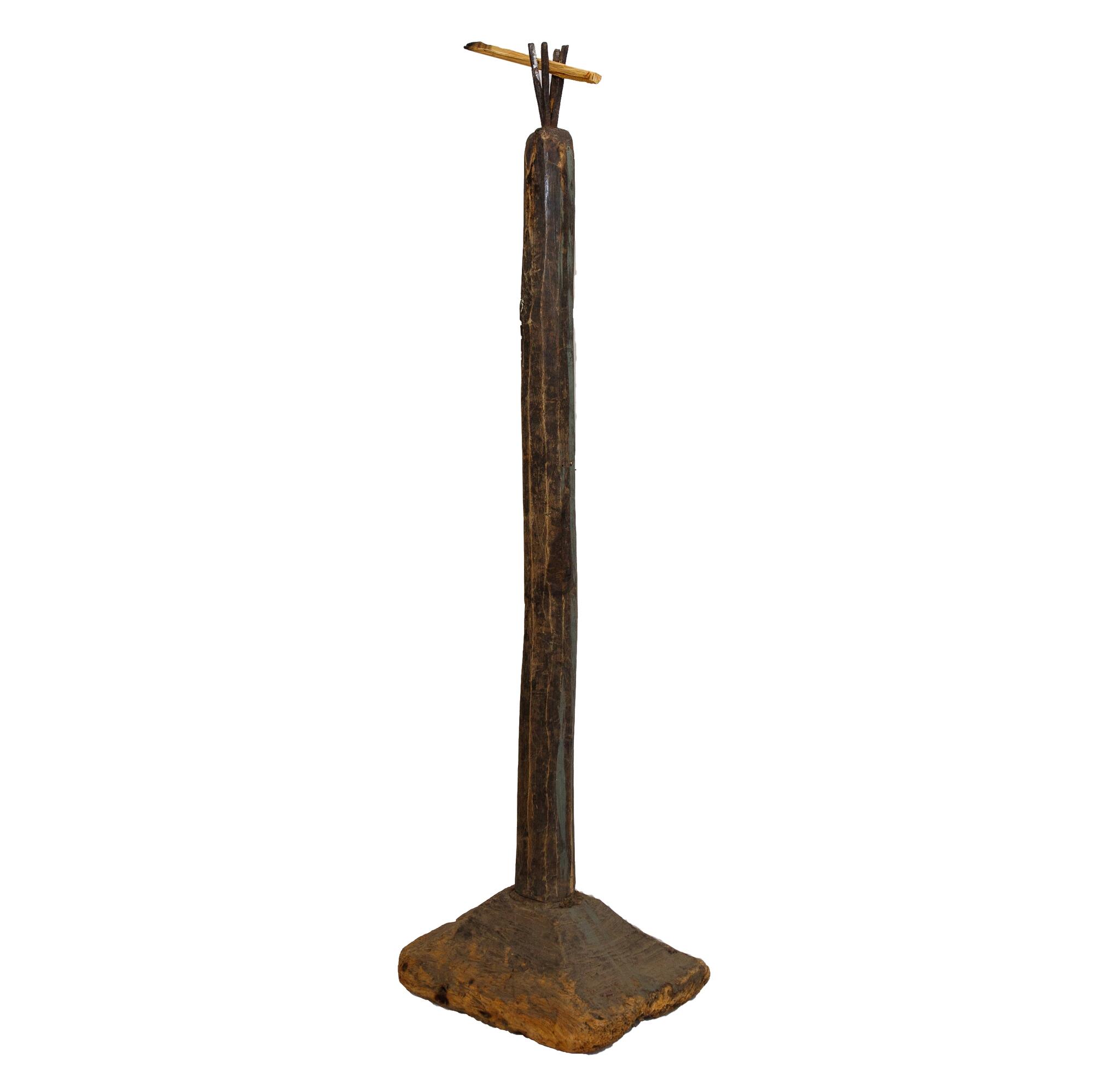The rushlight holder, (“svetets” in Russian), was made in the village of Podlesnaya Tavlya in the Saransk Uyezd, Penza Province. The museum staff bought it during one of their ethnographic expeditions in the mid-1930s. There is a record in the museum registration book dated back 1934-1936:
Rushlight holder
Время создания
the mid-19th century
Место создания
Podlesnaya Tavla, Saransk district, Penza province
Размер
114x25x34 cm
basement – 34х25х12 cm
basement – 34х25х12 cm
Техника
carpentry
2
Открыть в приложении#1
Rushlight holder
#7
#8
“Chevsyalgomo” rushlight holder and other Mordovian household items were purchased in Podlesnaya Tavlya, Kochkurovsky district. Bought for 60 rubles.
#9
Until the end of the 19th century village houses were mainly lit with a rushlight fixed in a rushlight holder, “svetets”. The svetets consisted of a massive wooden base, had a cubic shape, with a small pillar on it. A short four-sided iron bar, a lamp, was inserted into the top of the pillar, cut at one end by four “fingers” (which equals 10 cm), into which the sliver was inserted. To get more light, several slivers were burned at the same time. Most rushlight holders were placed on the floor. Any peasant could make such a primitive lighting device himself.
In wooden houses, a basin of water was placed under the rushlight so that the falling embers would not set fire to the floor. In houses with dirt or clay floors, the basins were placed only in winter, in severe cold, when the floor was covered with straw for warmth.
The sliver, a thin long piece of dry wood, was called “shyav” or “shyavnya” in the Mordvin-Moksha language. They were used not only for lighting, but also for firing up stoves. Pine, birch into, aspen, oak, maple, and ash were used to make it. In order to get thin and long slivers — up to 70 centimeters in length, a log was steamed in the stove. Then it was chopped in rows from one end with an axe to the depth of 15 centimeters and then slivers were stripped by hands. Birch logs were dried on the stove and in the oven, and then plucked with a large knife known as a “mower” or a scythe fragment.
The obtained sliver was dried in the stove under the hearth, where there was a fairly large niche — the under-burner. The kitchen utensils were also stored there. Mordovian peasants used rushlights until the early 20th century, when they were gradually replaced by more modern means of lighting — candles, kerosene and oil lamps, and later by electricity.
In wooden houses, a basin of water was placed under the rushlight so that the falling embers would not set fire to the floor. In houses with dirt or clay floors, the basins were placed only in winter, in severe cold, when the floor was covered with straw for warmth.
The sliver, a thin long piece of dry wood, was called “shyav” or “shyavnya” in the Mordvin-Moksha language. They were used not only for lighting, but also for firing up stoves. Pine, birch into, aspen, oak, maple, and ash were used to make it. In order to get thin and long slivers — up to 70 centimeters in length, a log was steamed in the stove. Then it was chopped in rows from one end with an axe to the depth of 15 centimeters and then slivers were stripped by hands. Birch logs were dried on the stove and in the oven, and then plucked with a large knife known as a “mower” or a scythe fragment.
The obtained sliver was dried in the stove under the hearth, where there was a fairly large niche — the under-burner. The kitchen utensils were also stored there. Mordovian peasants used rushlights until the early 20th century, when they were gradually replaced by more modern means of lighting — candles, kerosene and oil lamps, and later by electricity.
#6
Ministry of Culture of the Russian Federation
читать дальшескрыть
00:00
00:00
1x
Rushlight holder
Время создания
the mid-19th century
Место создания
Podlesnaya Tavla, Saransk district, Penza province
Размер
114x25x34 cm
basement – 34х25х12 cm
basement – 34х25х12 cm
Техника
carpentry
2
Открыть в приложении
Поделиться



